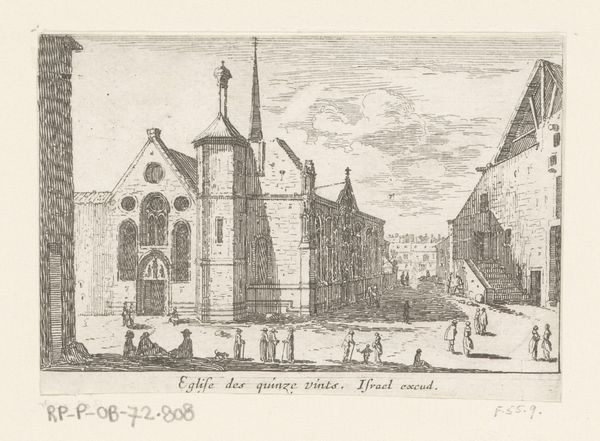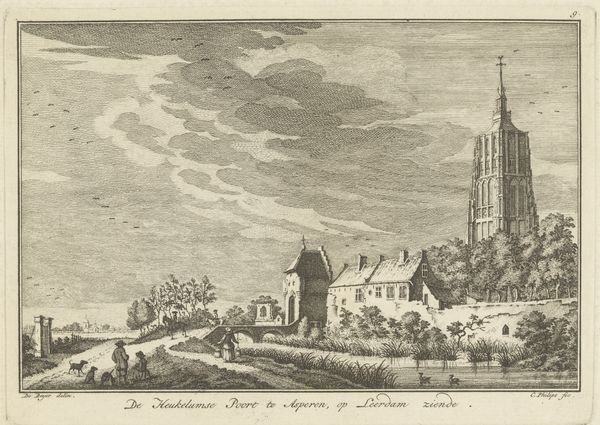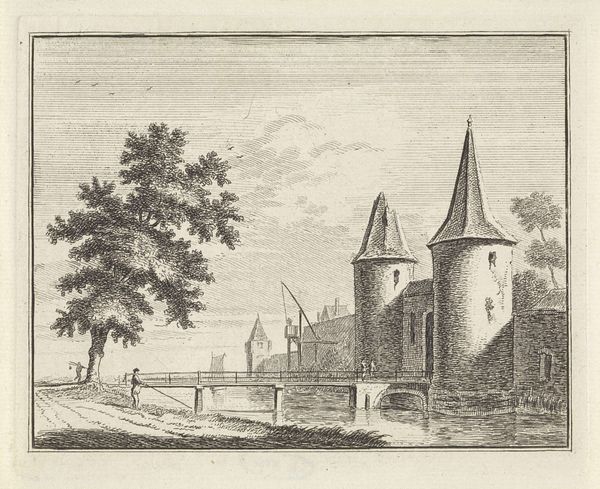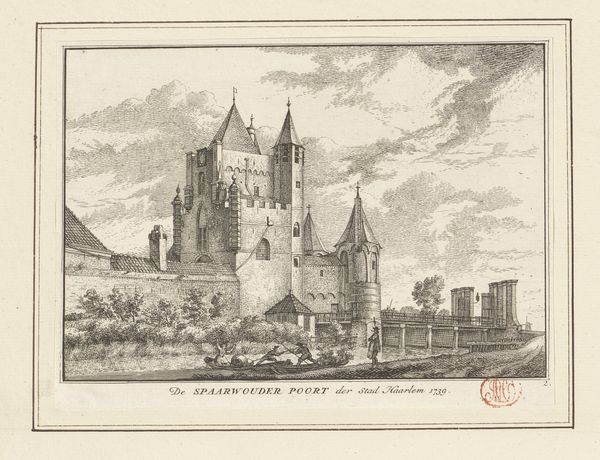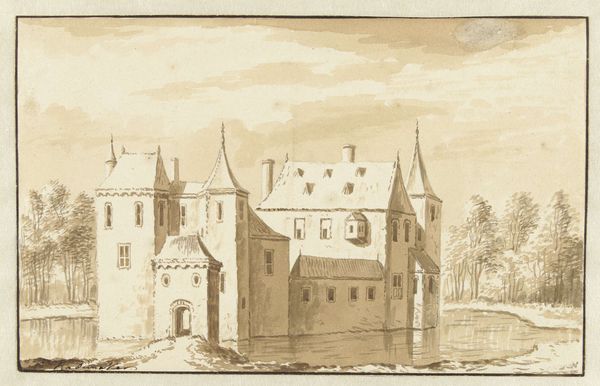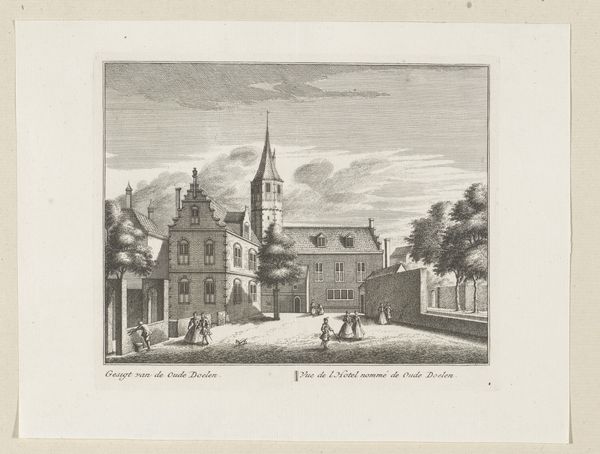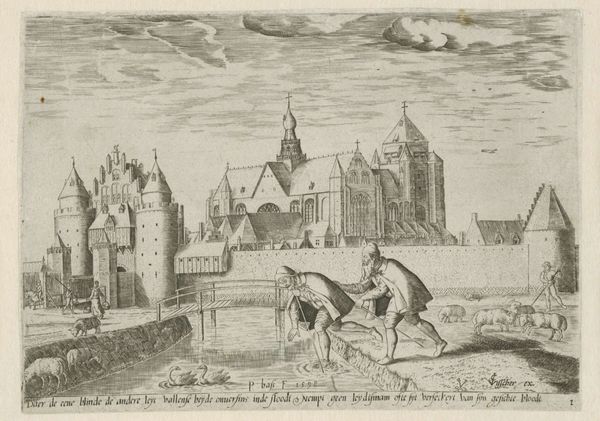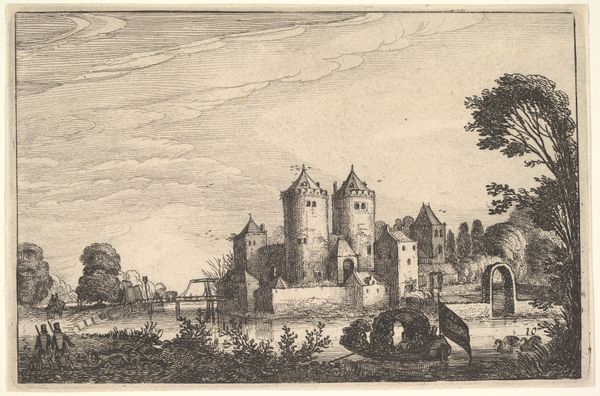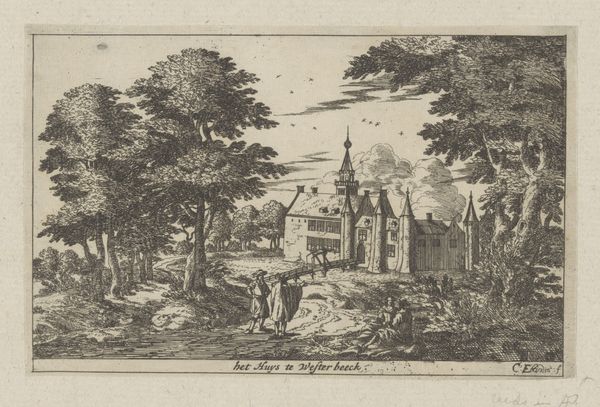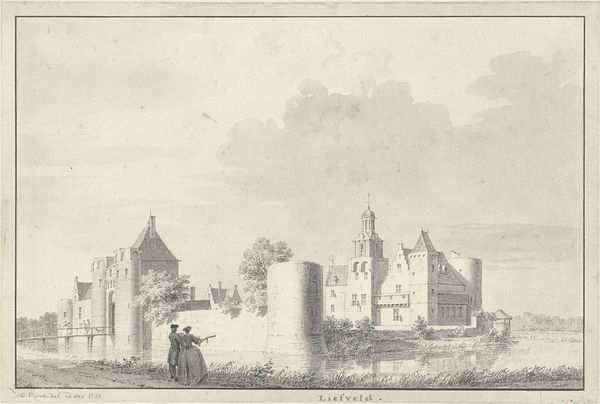
print, engraving, architecture
#
baroque
#
dutch-golden-age
# print
#
landscape
#
cityscape
#
engraving
#
architecture
Dimensions: height 65 mm, width 82 mm
Copyright: Rijks Museum: Open Domain
Editor: Here we have "View of the Oldest Saint Antony’s Gate in Amsterdam," an engraving by Jan Goeree, dating from the 1720s or 30s. It’s a small print, but it shows quite a detailed cityscape of the gate and the area around it. I find it interesting how daily life is represented around this stoic building. What are your thoughts on it? Curator: Well, first, it's fascinating to consider the role of prints like this in 18th-century Dutch society. How did this print function? Was it purely documentary? A souvenir? Or was it a subtle form of civic boosterism, idealizing Amsterdam’s landmarks? Editor: I hadn’t considered it as boosterism, but I see what you mean! The engraving definitely presents a respectable image of the gate and its surroundings. Curator: Exactly! And that building itself—it's not just any building, but a city gate. City gates in this era held immense symbolic power. They were liminal spaces – thresholds between the known and unknown, security and opportunity, civility and wilderness. What kind of public message is made by displaying that? Editor: So, the choice to depict the gate, and to include everyday figures around it, almost grounds a grand civic symbol, humanizing it and possibly suggesting stability. Curator: Precisely. It emphasizes the order and security that the city provides to its inhabitants, a message quite poignant amidst ongoing social and political transformations. We can tell by the inscription on the artwork that this is not even the old Saint Antony's Gate, as its name is referenced, so it's as if there's this message of time, civic improvement, progress. Editor: I see that now. It is interesting to consider this simple print as a complex layering of cultural, political, and historical contexts. Curator: Right. Art provides glimpses into specific moments within larger cultural and societal currents, reflecting values, anxieties, and aspirations of the time. That kind of historical depth is part of what makes it worth understanding and engaging with visual art.
Comments
No comments
Be the first to comment and join the conversation on the ultimate creative platform.
